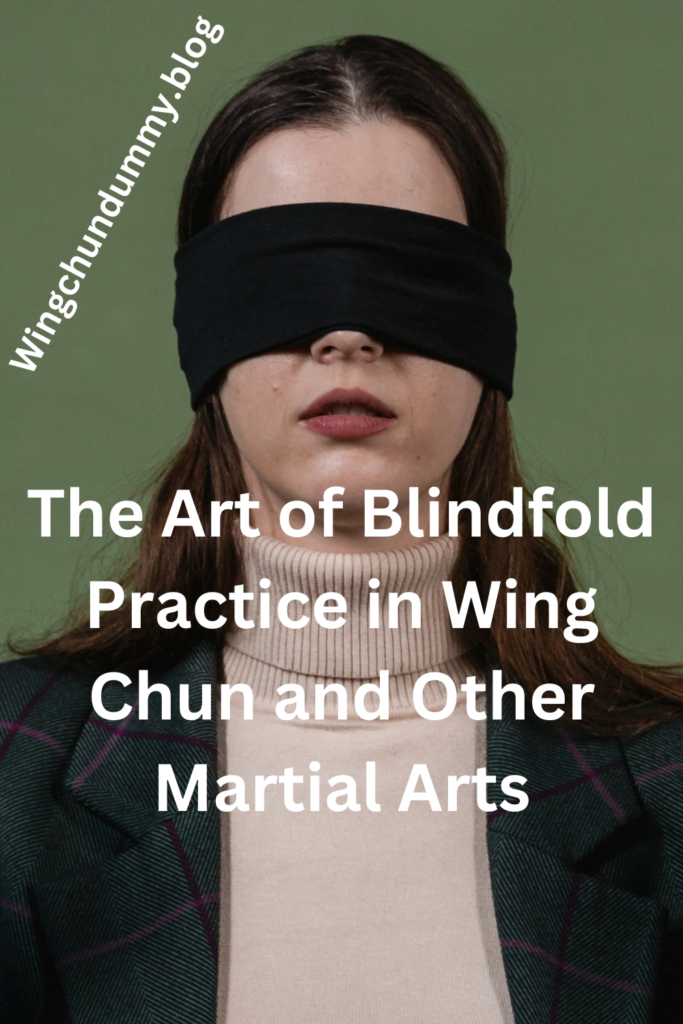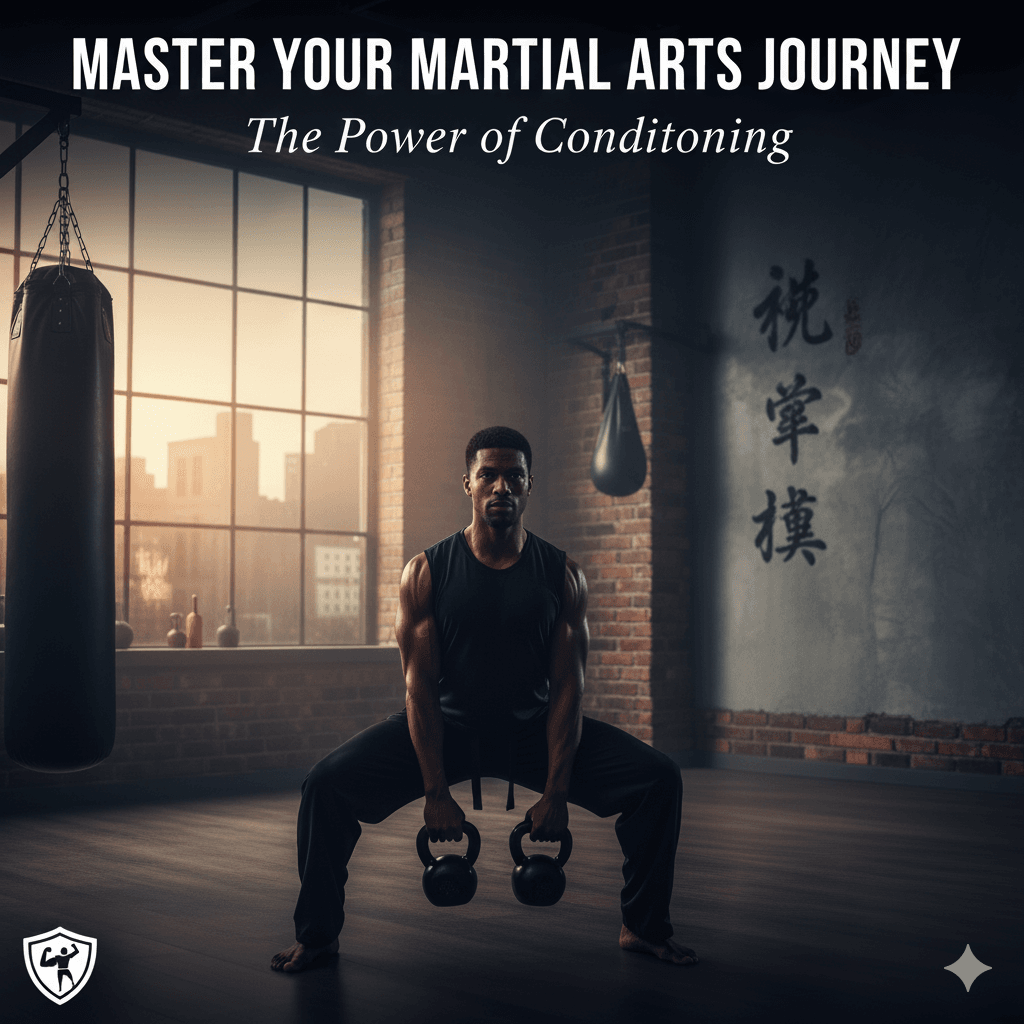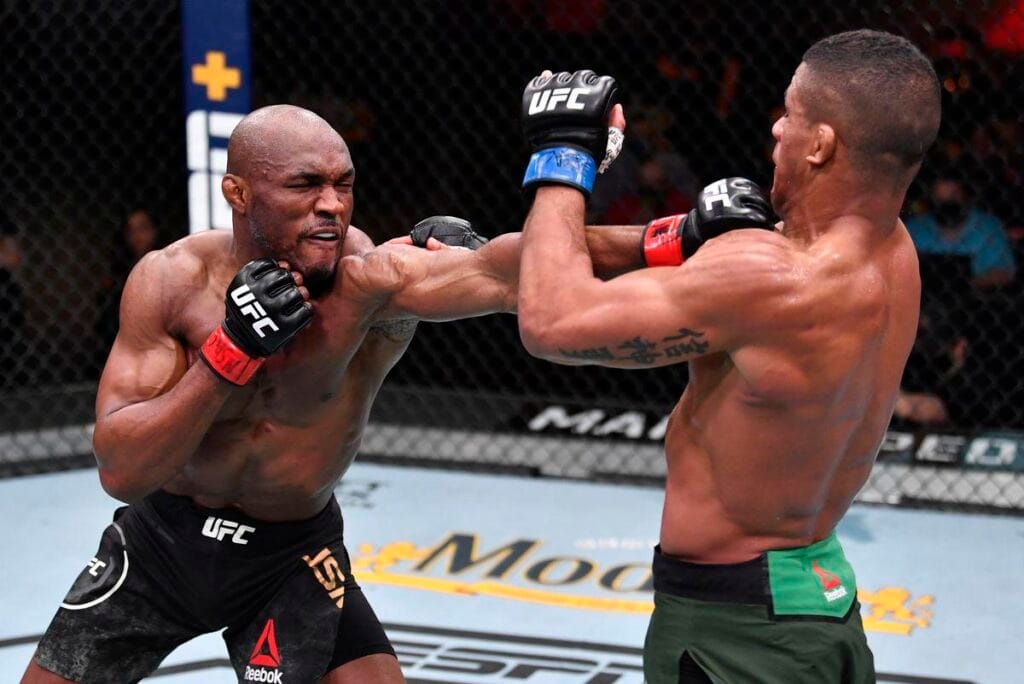Blindfold practice, a technique utilized across various martial arts disciplines.
Serves as a unique training method aimed at heightening a practitioner’s sensory awareness and responsiveness.
By intentionally depriving oneself of sight, martial artists cultivate and refine their other senses.
Leading to a more profound and instinctive understanding of their environment and opponents.
This practice is not only about enhancing physical skills but also about developing a deeper psychological resilience and spatial awareness.
Historically, blindfold practice has roots in ancient martial traditions.
where warriors and monks sought to transcend ordinary sensory perceptions.
By training in darkness or with eyes covered, they aimed at achieving a heightened state of alertness and intuition.
Crucial for survival in unpredictable combat situations.
The emphasis was on honing one’s ability to detect subtle movements, shifts in energy.
and variations in breathing patterns, which are often imperceptible when relying solely on vision.
In the context of Wing Chun, blindfold practice is particularly significant.
Wing Chun, known for its close-range combat techniques and rapid strikes, benefits greatly from the practitioner’s ability to sense and react to an opponent’s movements without visual cues.
This form of training sharpens the practitioner’s tactile sensitivity, enabling them to “feel” an opponent’s intentions and respond with precision and speed.
By focusing on touch and proprioception, Wing Chun practitioners develop a more instinctive and fluid fighting style.
Other martial arts, such as Karate, Judo, and Taekwondo, also incorporate blindfold training to various extents.
The underlying principle remains consistent:
by eliminating the dominant sense of sight, martial artists are compelled to rely on their other senses, thus enhancing their overall combat effectiveness.
This practice not only improves physical agility and reaction time but also fosters a deeper mental and emotional connection to the art.
As we delve deeper into the specific benefits and techniques associated with blindfold practice in Wing Chun and other martial arts.
it becomes evident that this method offers a unique and transformative approach to martial arts training.
The journey through this practice reveals much about the interplay between the senses, intuition, and the art of combat itself.
The Philosophy Behind Blindfold Practice in Wing Chun
Blindfold practice in Wing Chun is deeply rooted in the martial art’s philosophy, which emphasizes sensitivity, touch, and close-quarter combat.
Unlike many other martial arts that rely heavily on visual cues, Wing Chun practitioners focus on developing a heightened sense of awareness through touch.
This unique approach is encapsulated in the principles of Chi Sao, or “Sticky Hands,” where practitioners engage in close-range drills to hone their tactile sensitivity.
By incorporating blindfolds, these drills aim to eliminate the reliance on sight.
Thereby enhancing the practitioner’s sensitivity to subtle movements and shifts in their opponent’s energy.
Renowned Wing Chun masters, such as Ip Man and Bruce Lee, have emphasized the importance of touch sensitivity in their teachings.
Ip Man, for instance, often highlighted that the true essence of Wing Chun lies in its ability to “feel” the opponent’s intentions through touch.
Bruce Lee, who trained under Ip Man, also integrated blindfold practice into his regimen to sharpen his reflexes and tactile awareness.
According to these masters, the removal of sight forces the practitioner to rely on their other senses, thus refining their overall combat skills.
Moreover, blindfold practice aligns with the core Wing Chun philosophy of economy of motion and efficiency.
In a close-quarter combat scenario, the ability to detect and respond to an opponent’s movements without visual confirmation can be a decisive advantage.
This practice cultivates an instinctive and immediate reaction to stimuli, which is crucial in high-pressure situations.
By training blindfolded, Wing Chun practitioners develop a deeper connection with their body’s innate responses, fostering a more intuitive and fluid fighting style.
In essence, the philosophy behind blindfold practice in Wing Chun transcends mere physical training.
It is a holistic approach that seeks to unify the mind and body, elevating the practitioner’s martial prowess to a higher level of sensory awareness and instinctive action.
Techniques and Drills in Blindfolded Wing Chun Training
Blindfolded training in Wing Chun is a distinctive approach that sharpens a practitioner’s sensitivity to tactile feedback and instinctive responses.
One of the cornerstone exercises in this type of training is Chi Sao, or Sticky Hands.
In Chi Sao, two practitioners engage in a continuous flow of hand movements, maintaining contact while attempting to disrupt their partner’s balance and defense.
The blindfold forces practitioners to rely on their sense of touch and proprioception, heightening their ability to ‘feel’ and predict their opponent’s actions.
This exercise is crucial for developing the tactile sensitivity necessary for effective close-quarters combat.
A variation of Chi Sao is Dan Chi Sao, or Single Sticky Hand.
This drill is similar in principle but involves only one arm from each participant.
Dan Chi Sao focuses on refining the sensitivity in the individual arm, making it an excellent exercise for beginners and those looking to enhance their precision.
By practicing with a blindfold, students learn to trust their instincts and respond to subtle changes in pressure and movement, which is invaluable in real combat situations.
Beyond Chi Sao and Dan Chi Sao, there are other sensitivity drills designed to improve a practitioner’s ability to sense and react without sight.
One such drill involves one partner executing slow, deliberate strikes while the other, blindfolded, deflects and redirects these attacks using fluid, circular motions.
This exercise reinforces the principle of yielding and redirecting force, a key tenet in Wing Chun philosophy.
Blindfolded training also incorporates footwork drills that emphasize balance and positioning.
Practitioners learn to move efficiently and maintain a stable structure even without visual cues.
These drills are integral to developing a deeper understanding of spatial awareness and body mechanics, which are essential skills for any martial artist.
Overall, blindfolded Wing Chun training is a comprehensive method that cultivates a heightened sense of touch, improved reflexes, and a more profound connection to the core principles of the art.
Through regular practice of these techniques and drills, martial artists can achieve a higher level of proficiency and instinctive responsiveness in their practice.
Benefits of Blindfold Training in Wing Chun
Integrating blindfold practice into Wing Chun training offers a multitude of benefits that can significantly enhance a practitioner’s skills.
One of the primary advantages is the improvement in tactile sensitivity.
When visual input is removed, the reliance on touch becomes paramount.
This heightened tactile awareness allows practitioners to better read their opponent’s movements through physical contact.
an essential skill in close-quarter combat scenarios.
Another substantial benefit is the enhancement of reflexes.
Without the ability to see, practitioners must rely on their other senses to react swiftly.
This heightened state of alertness translates into quicker response times and sharper reflexes, which are crucial in any martial arts discipline.
Blindfold training also promotes better balance.
The absence of visual cues forces practitioners to develop a more profound sense of equilibrium.
Which is vital for maintaining stability during complex maneuvers and stances.
Increased confidence is another noteworthy outcome of blindfold practice in Wing Chun.
Training without sight can initially be intimidating, but as practitioners become more accustomed to relying on their other senses, their self-assurance grows.
This newfound confidence is invaluable in real-world self-defense situations, where unpredictability is a constant factor.
Personal anecdotes from seasoned practitioners further underscore these benefits.
Many have shared experiences of how blindfold training has enhanced their overall martial arts proficiency.
For instance, one practitioner noted that their ability to anticipate and counteract an opponent’s moves improved dramatically after incorporating blindfold drills into their routine.
Scientific explanations also support the advantages of blindfold training. Sensory adaptation.
A phenomenon where the brain adjusts to changes in sensory input, plays a significant role.
Studies have shown that when one sense is deprived, the brain compensates by enhancing the functionality of other senses.
This neural plasticity is a key factor in the improved tactile sensitivity and reflexes observed in practitioners who regularly engage in blindfold training.
Blindfold Practice in Other Martial Arts: A Comparative Analysis
Blindfold practice, though often associated with Wing Chun, finds its utility across various martial arts disciplines.
Each leveraging this technique to enhance specific skills.
In Brazilian Jiu-Jitsu, blindfold training is primarily used to heighten tactile sensitivity and improve positional awareness.
Practitioners are often blindfolded during rolling sessions to develop a keener sense of feel for their opponent’s movements and to refine their ability to execute techniques without relying on visual cues.
This method fosters a deep, intuitive understanding of balance and leverage, essential components in Brazilian Jiu-Jitsu.
In Karate, blindfold practice is integrated with a focus on enhancing reaction times and spatial awareness.
By eliminating visual distractions, Karatekas are encouraged to rely on their other senses, particularly hearing and touch, to anticipate and respond to attacks.
This form of training helps in refining timing and precision in executing strikes and blocks.
Moreover, it cultivates a heightened state of mental focus and calmness under pressure, qualities that are indispensable in mastering Karate.
Taekwondo, renowned for its dynamic kicking techniques, utilizes blindfold practice to improve balance and proprioception.
Practitioners engage in drills such as practicing forms (poomsae) and sparring with blindfolds to develop a more profound sense of body position and movement in space.
This training method aims to enhance the accuracy and power of kicks, even when visual feedback is unavailable.
Additionally, it strengthens the practitioner’s ability to adapt to unpredictable situations, a critical skill in both competitive and self-defense scenarios.
While the benefits of blindfold practice are universally acknowledged across these martial arts, the emphasis varies.
Brazilian Jiu-Jitsu focuses on tactile sensitivity and positional awareness.
Karate on reaction times and spatial awareness, and Taekwondo on balance and proprioception.
These differences highlight the unique demands and training philosophies of each discipline.
However, a common thread remains: blindfold training is an invaluable tool for developing deeper intuitive skills and enhancing overall martial prowess.
Case Studies and Success Stories
Blindfold practice has emerged as a transformative training method across various martial arts disciplines, including Wing Chun.
Numerous martial artists have documented substantial improvements in their skills through this unique approach.
These real-life case studies and success stories not only highlight the efficacy of blindfold practice but also serve as motivational examples for practitioners seeking to enhance their abilities.
One notable case is that of Master John Chen, a seasoned Wing Chun instructor with over two decades of experience.
Master Chen began incorporating blindfold practice into his training regimen five years ago.
Through consistent practice, he reported a marked improvement in his reflexes and spatial awareness.
In an interview, he shared, “Blindfold practice forced me to rely on my other senses and instincts, which significantly sharpened my reaction time and overall combat effectiveness.”
Another compelling example is Sarah Lee, a dedicated practitioner of Brazilian Jiu-Jitsu.
She struggled with anticipating her opponents’ moves and maintaining her balance during grappling sessions.
After integrating blindfold practice into her routine, Sarah noticed a dramatic improvement in her ability to sense and counter her opponent’s movements without relying on visual cues.
Her coach, Carlos Mendes, remarked, “Sarah’s progress has been phenomenal.
Blindfold practice has enhanced her tactile sensitivity, allowing her to predict and react to her opponent’s intentions more effectively.”
Additionally, a study conducted at the University of Martial Arts Training examined the impact of blindfold practice on a group of intermediate-level practitioners.
Over a six-month period, participants engaged in weekly blindfolded sparring sessions.
The study concluded that 85% of the participants experienced significant improvements in their peripheral awareness and reaction times.
The research highlighted that this training method cultivates a deeper connection with one’s own body and the surrounding environment, leading to heightened performance in unanticipated scenarios.
These success stories underscore the transformative potential of blindfold practice in martial arts.
By challenging practitioners to transcend their reliance on sight.
this training method fosters enhanced sensory perception, quicker reflexes.
and a more profound understanding of one’s physical space.
As evidenced by these case studies, blindfold practice stands as a powerful tool for martial artists striving for excellence.
Challenges and Safety Considerations
Blindfold practice in Wing Chun and other martial arts presents a unique set of challenges and requires stringent safety considerations to ensure a productive and injury-free training experience.
One of the primary challenges is the loss of visual cues, which can disrupt balance and spatial awareness.
Practitioners must rely on other senses, such as touch and hearing, to compensate, which requires a significant adjustment period.
To mitigate the inherent risks, it is crucial to adopt a gradual approach to blindfold practice.
Beginners should start with basic exercises under the supervision of a knowledgeable instructor who can provide immediate feedback and corrections.
This gradual progression helps build confidence and hones sensory skills without overwhelming the practitioner.
As proficiency increases, more complex drills can be introduced.
Common mistakes during blindfold practice include overestimating one’s abilities and attempting advanced techniques prematurely.
This can lead to unnecessary injuries and hinder progress.
It is essential to maintain realistic expectations and focus on mastering foundational skills before moving on to more challenging exercises.
Safety precautions are paramount. Practitioners should always train on appropriate surfaces, such as padded mats, to minimize the impact of falls.
Protective gear, including mouthguards and padded gloves, can provide additional safety.
It is also advisable to have a training partner who is aware of the drills and can react appropriately to prevent accidents.
Expert advice underscores the importance of a structured training regimen and the presence of a skilled instructor.
The instructor’s role is critical in guiding the practitioner through the nuances of blindfold practice, ensuring that techniques are performed correctly and safely.
They can also tailor the training to the individual’s skill level, making adjustments as needed to optimize progress and minimize risk.
In conclusion, blindfold practice offers valuable benefits but must be approached with caution.
By understanding the challenges and adhering to safety guidelines, practitioners can enhance their martial arts skills effectively and safely.
Conclusion: Integrating Blindfold Practice into Your Training Routine
Integrating blindfold practice into your regular training routine can significantly enhance your martial arts journey.
This unique method not only sharpens your sensory perception but also deepens your understanding of spatial awareness and body mechanics.
To begin, it’s crucial to start slow and focus on the basics.
Begin with simple drills, such as basic punches or footwork, to get accustomed to the sensation of training without sight.
Consistency is key. Allocate a specific time during each training session dedicated to blindfold practice.
This could be as little as 10-15 minutes initially, gradually increasing as you become more comfortable.
Patience is equally important; progress may be slow, but the long-term benefits are substantial.
Over time, you will notice improved reaction times, heightened sensitivity to your surroundings, and a deeper connection to your movements.
Here is a step-by-step guide for beginners:
1. **Start with Basic Drills**: Focus on simple techniques like straight punches, blocks, and footwork. Ensure you are in a safe environment to prevent injuries.
2. **Gradual Progression**: As you become more comfortable, incorporate more complex combinations and movements. Pair up with a training partner to practice defensive techniques and reactions.
3. **Sensory Awareness**: Pay attention to sounds, shifts in air pressure, and tactile feedback. These sensory inputs will become your guides in the absence of sight.
4. **Consistency and Patience**: Regular practice is essential. Dedicate a portion of each training session to blindfold practice and be patient with your progress.
5. **Reflect and Adjust**: After each session, take time to reflect on your experience.
Identify areas for improvement and adjust your practice accordingly.
Blindfold practice is a powerful tool that can elevate your martial arts skills.
By integrating this method into your training routine, you open yourself to a deeper level of mastery and a more profound connection to your art.
Embrace the challenge, remain consistent, and explore the transformative potential of blindfold training.



